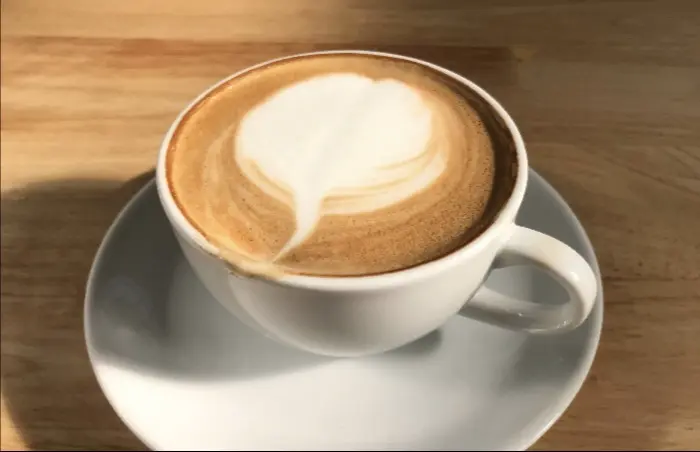Espresso is one of the most popular coffee drinks in the world. But many people wonder: Is espresso black? The answer isn’t as simple as it seems. To understand, we need to explore what espresso is, how it’s made, and how its color is perceived.
What Is Espresso?
Espresso is a concentrated coffee beverage brewed by forcing hot water through finely-ground coffee under high pressure. It originated in Italy and is the base for many coffee drinks like lattes, cappuccinos, and Americanos.
How Espresso Differs from Regular Coffee
Brewing Method: Espresso uses pressure (9–10 bars), while drip coffee relies on gravity.
Grind Size: Espresso requires a fine grind, whereas drip coffee uses a medium grind.
Brew Time: Espresso extracts in 25–30 seconds, while drip coffee takes minutes.
Strength: Espresso is more concentrated, with a thicker texture and bolder flavor.
The Color of Espresso
At first glance, espresso appears black. But if you look closely, you’ll notice shades of dark brown, reddish tones, and even a golden crema on top.
Why Espresso Isn’t Pure Black
- Roast Level – Espresso beans are typically dark roasted, but not burnt. This leaves some natural coffee oils and compounds that affect color.
- Crema – The golden-brown foam on top comes from emulsified oils and CO₂, lightening the overall appearance.
- Light Reflection – Under bright light, espresso shows reddish-brown hues instead of pure black.
Comparing Espresso to Black Coffee
Black coffee (like drip or pour-over) is often lighter in color because it’s more diluted. Espresso, being concentrated, looks darker but still isn’t jet black.
Factors Affecting Espresso’s Color
Several elements influence how dark or light an espresso shot appears:
1. Coffee Bean Roast
Light Roast: Rarely used for espresso; produces a lighter, more acidic shot.
Medium Roast: Balanced flavor with caramel-like tones; color is medium-dark.
Dark Roast: Traditional for espresso; deep brown with oily surface, but not pitch black.
2. Extraction Time
Under-extracted Espresso (too fast): Looks pale and weak.
Properly Extracted Espresso: Rich, dark brown with reddish hints.
Over-extracted Espresso (too slow): Bitter and darker, but still not pure black.
3. Freshness of Beans
Freshly roasted beans produce more crema, adding a lighter hue. Stale beans make a flatter, darker shot.
4. Water Temperature
Too hot (above 96°C/205°F) can over-extract, making the espresso darker and bitter. Too cool (below 90°C/194°F) leads to under-extraction and a lighter color.
The Role of Crema in Espresso’s Appearance
Crema is the creamy, golden-brown layer on top of a well-pulled espresso. It forms due to:
- CO₂ Release – Fresh beans release gas when exposed to hot water.
- Emulsified Oils – Coffee oils mix with water under pressure, creating foam.
This crema makes espresso look less black and more multi-toned.
How Lighting Changes Espresso’s Color
Under dim lighting, espresso may seem black. But in natural light, you’ll see:
- Dark Brown Base
- Reddish Highlights
- Golden Crema
This is why professional coffee photos are taken with side lighting—to reveal the true colors.
Cultural Perceptions of Espresso’s Color
In Italy, a “good” espresso has a hazelnut-brown color with thick crema. Some specialty cafes prefer medium roasts for more complexity, leading to a lighter appearance.
In contrast, many chain coffee shops serve very dark espresso, making people associate it with blackness.
Does Espresso Taste “Black”?
“Black coffee” usually means coffee without milk or sugar. Since espresso is served straight by default, it’s often called black—but its flavor is more nuanced than regular black coffee.
Flavor Profile of Espresso
- Sweetness – Caramel, chocolate notes.
- Acidity – Bright, fruity tones in lighter roasts.
- Bitterness – Present but balanced in well-made shots.
This complexity makes espresso different from standard black drip coffee.
Common Misconceptions About Espresso
Espresso is just really strong black coffee
No—it’s a different brewing method with unique texture and flavor.
All espresso is bitter and burnt
Only if poorly extracted or made with over-roasted beans. Good espresso is balanced.
Espresso has more caffeine than regular coffee
Per ounce, yes. But a standard serving (1 oz) has less caffeine than an 8 oz cup of drip coffee.
How to Judge Espresso Quality by Color
A well-made espresso should have:
- A dark, but not black, base
- A thick, golden crema
- No visible oil slicks (sign of stale beans)
If it looks pitch black, it might be over-roasted or over-extracted.
Conclusion
Technically, no—espresso is a very dark brown with reddish and golden tones. The crema, roast level, and extraction process all affect its color. While it’s often called “black coffee,” true espresso is more complex in both appearance and taste.Calling espresso “black coffee” is more about tradition than accuracy. True espresso is a complex, multi-toned drink with depth in both flavor and appearance. Next time you sip an espresso, take a moment to appreciate its true colors—dark, rich, and far from simply black. Next time you order an espresso, take a closer look. You’ll see it’s not just black—it’s a rich, layered drink with depth in every sip.
Related topics:
How to Make Iced Espresso Drinks?
How To Make Aeropress Espresso?


